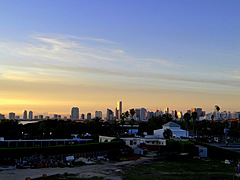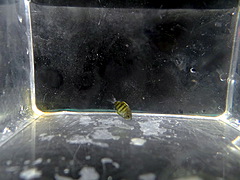Miami, fish larvae and corals
by Romain Chaput, on
I arrived in Miami a month ago. The town is as Cuban as American. Two different cultures and languages co-exist, two landscapes with high buildings and rainforest gardens. I enjoy to travel each day through the city with my bike (thank you Matt for this useful gift). The RSMAS is located on Virginia key, in front of Miami and the most amazing view to the town is from my office.
I am here to do my Master 2 internship. Under the direction of Dr Claire Paris (RSMAS), and the co-supervision of Dr Jean-Olivier Irisson (OOV), I will study the fish larval recruitment.
Fish larvae are driven by currents but they need to settle in precise places: the coral reefs. To find these small places lost in the immensity of the ocean, larvae could follow environmental cues. And when you are looking for coral reefs, it seems natural to follow cues given by corals. This is what we are looking: Is the coral diversity a key factor for fish larval settlement ?
Why is that important ? Because successful settlement drives a part of the distribution of fish species in an area. Know abilities of larvae to recruit in specific places will allow us to have a better understanding of fish assemblages.
To study this exciting subject I will have the chance to work in the new Marine Technology & Life Sciences Seawater Complex, where Dr Claire Paris has her office and two laboratories. This building, and the RSMAS campus, have plenty of advantages: new labs and equipments to perform experiments, resting rooms with tea and coffee, nice boats for field surveys, a good restaurant with a beautiful view… but above all amazing teammates.
Here a view from my office window and my new work friend…

